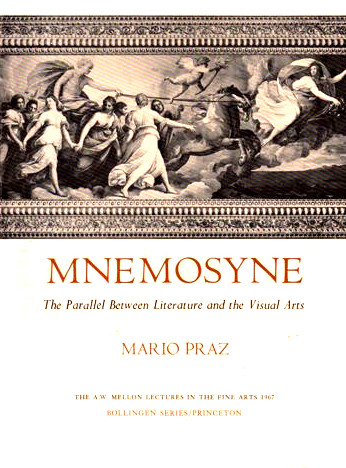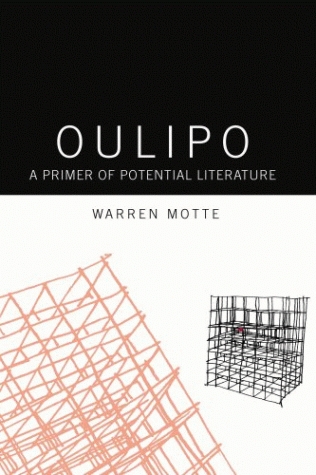Mario Praz: Mnemosyne: The Parallel Between Literature and the Visual Arts (1970–) [English, Spanish]
Filed under book | Tags: · art, art history, art theory, history of literature, literary theory, literature, memory, poetry

In his search for the common link between literature and the visual arts, Professor Praz draws upon the abundant evidence of long mutual understanding and correspondence between the sister arts. Although parallels of theme and inspiration are plentiful, he is not primarily concerned with these. Rather, he examines the close relationship or air de famille between the expression of the arts in any given epoch.
Each epoch has “its peculiar handwriting or handwritings, which, if one could interpret them, would reveal a character, even a physical appearance.” Although handwriting is taught and some of its characteristics thus belong to the general style of the period, the personality of the writer does not fail to pierce through. Something of the same sort, the author proposes, occurs in art. The kinship of literature and painting rests on this circumstance: a work of art, whether visual or literary, must use the distinctive “handwriting” of its particular age, even as its originality pierces through this handwriting.
The likeness between the arts within various periods of history can ultimately be traced, then, to structural similarities — similarities that arise out of the characteristic way in which the people of a certain epoch see and memorize facts aesthetically. Mnemosyne, at once the goddess of memory and the mother of the muses, therefore presides over this view of the arts. In illustrating her influence, Professor Praz ranges widely through Western sources, both literary and pictorial. (from the dust jacket)
The A.W. Mellon Lectures in the Fine Arts, 1967
Publisher Princeton University Press, 1970
Bollingen Series XXXV, 16
ISBN 9780691098579
261 pages
Review (E.H. Gombrich, 1972)
Review (D.C., Spenser Newsletter, page 3, 1971)
Review (in Japanese)
Publisher (EN)
Mnemosyne: The Parallel between Literature and the Visual Arts (English, 1970)
Mnemosyne: El paralelismo entre la literatura y las artes visuales (Spanish, trans. Ricardo Pochtar, 1979, no OCR, via Daniel Ferreira)
Friedrich A. Kittler: Literature, Media, Information Systems: Essays (1997)
Filed under book | Tags: · information theory, literary theory, literature, media theory, philosophy, technology

An early collection of the writings of Friedrich Kittler in English translation.
The following essays are included: “Gramophone, Film, Typewriter”, “Dracula’s Legacy”, “Romanticism–Psychoanalysis–Film: A History of the Double”, “Media and Drugs in Pynchon’s Second World War”, “Media Wars: Trenches, Lightning, Stars”, “The World of the Symbolic–A World of the Machine”, “There Is No Software” and “Protected Mode”.
Edited and Introduced by John Johnston
Publisher OPA, Amsterdam, 1997
ISBN 9057010712
192 pages
PDF, PDF (updated on 2017-5-2)
Comments (5)Warren Motte (ed.): Oulipo: A Primer of Potential Literature (1998)
Filed under book | Tags: · literary theory, literature, oulipo

This is an amazing anthology of writings by members of the group known as Oulipo, including, among others, Italo Calvino, Harry Mathews, Georges Perec, Jacques Roubaud, and Raymond Queneau. Put simply, this group, which was founded in Paris in 1960, approaches creative writing in a way that still has yet to make its impact in the United States and its creative writing programs.
Rather than inspiration, rather than experience, rather than self-expression, the Oulipians viewed imaginative writing as an exercise dominated by what they called “constraints.” Quite commonly, they would attempt to write stories, for instance, in which strict rules had to be imposed and followed (for example, Georges Perec’s notorious novel A Void, which was written without the use of the letter “e”).
While a major contribution to literary theory, Oulipo is perhaps most distinguished as an indispensable guide to writers.
Foreword by Noel Arnaud
Publisher Dalkey Archive Press, 1998
French Literature series
ISBN 9781564781871
224 pages
PDF (no OCR)
Comment (0)
